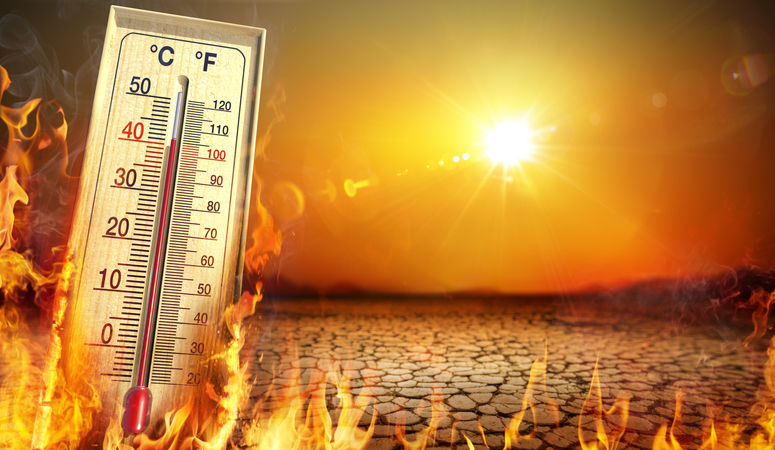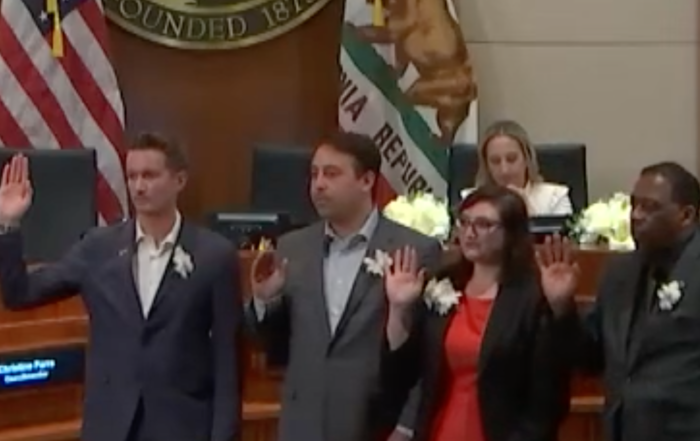In the early 2000s, the weather in Los Angeles and Southern California as a whole caught the attention of a surprising party.
Alongside peers from Berkeley and UCLA, scientists from NASA released a paper in 2008 titled, “Heat Waves in Southern California: Are They Becoming More Frequent and Longer Lasting?” They answered that simple question with a resounding yes, and this point was reinforced in today’s world by a 2020 study published in an American Geophysical Union (AGU) Journal.
Heat waves are defined by this NASA study as periods where the average temperature is 90 degrees or higher for three consecutive days, and Southern Californians are feeling the effects of an almost month-long heat wave this year following a memorable wave last August. There’s no sign that these heat waves will be slowing down any time soon according to the papers.
NASA’s study concluded that from 1906 to 2006, the average annual maximum temperature in Los Angeles increased by about 5 degrees, while the average minimum temperature increased by around 4.2 degrees. Extreme heat days — days when the temperature is 90 degrees or higher — are themselves also more common by around 23 days.
Getting closer to the present day, the AGU study concluded that inland urban regions have experienced nine heat waves per year. These waves lasted an average of 6 days from 2015-2020, and California was one of many regions to experience a brutal heat wave in 2022 that brought the temperature in Los Angeles into the triple digits.
What exactly is causing this continuous increase of blazing heat in L.A.? The effects of global warming is an easy answer, but there are other underlying factors regarding urban life as a whole that make cities like Los Angeles more susceptible to these kinds of conditions.
Infrastructure made of materials like concrete, asphalt, and brick that absorb heat and create “heat islands” cause heat waves in cities to not only be worse but also extend their duration by 55 percent, according to research published last year. The heat retentive properties of these materials also slow cooling at night, which further contributes to the duration of heat waves.
“Although most U.S. cities begin cooling in September, west coast cities still have some of their hottest days in early fall,” the NASA paper reads. “The Pacific Sea Surface temperatures usually reach their peak at this time and subtropical Pacific high-pressure systems tend to stall over the western states.”
These heat waves can lead to deadly consequences, particularly amongst the city’s most vulnerable populations. According to a 2021 study done by the Los Angeles Times, as many as 3,900 deaths between 2010 and 2019 can be attributed to heat-related causes, several times higher than the officially reported number.
So with the seemingly inescapable looming, how can you stay healthy in the extreme heat becoming more and more prevalent in L.A.?
Staying hydrated is the most important thing one can do to stay safe during a heat wave. Many of the heat-related ailments that people suffer from stem from dehydration, so drink as much water as one can. Additionally, cold water can be used to cool off by either drinking it or pouring it on towels to place on the body. To that end, drinking caffeine or alcoholic beverages is not advised, as both will serve as a diuretic and lead to potential dehydration.
Choice of clothing is another important aspect of getting through extreme heat. Wearing lightweight clothes that are also a light color will help maintain a cooler body temperature. Closing the windows and blinds at home during the peak hours of heat while allowing a breeze to flow through when it is cooler is important to keep one’s home cool.
Many household appliances like lights, computers, and the oven can release significant amounts of additional heat, so ensuring that no unnecessary electronics are running and trying to eat foods that do not require cooking are more ways to maintain as cool of an environment as one can.
Finally, avoiding significant physical exertion — particularly outdoors — is recommended to reduce the risk of heat stroke that becomes prevalent in these heat waves. If you do need to go outside during a heat wave or are simply too hot while at home, Los Angeles County has several resources to help stay cool.
There are around 70 cooling centers hosted by various L.A. County entities on the Westside, mainly being run by libraries around the county. Officials also installed water hydration stations at 145 different facilities in the county as of August last year, and the various pools and splash pads — parks with water features for people who can’t swim to use — are also recommended to help keep cool.
For more information, visit the City of L.A.’s Extreme Heat webpage here.
Photo Image by RomoloTavani
Stay informed. Sign up for The Westside Voice Newsletter
By clicking submit, you agree to share your email address with Westside Voice. We do not sell or share your information with anyone.








